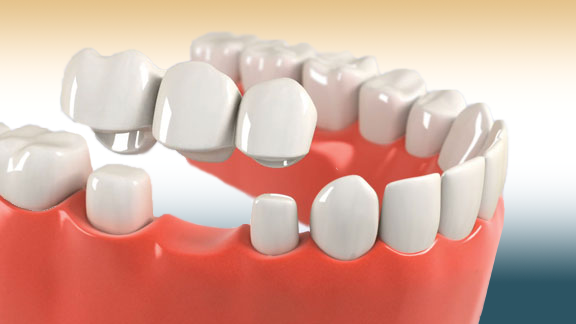Modern dentistry offers solutions that not only restore your oral health but also enhance the way your smile looks and functions. Among these, dental crowns and bridges are two of the most effective options for replacing or repairing damaged or missing teeth. But how exactly do they work? Let’s dive into the details and explore how these restorations can bring lasting benefits to your dental well-being.
In simple terms, crowns and bridges are fixed prosthetic devices. Unlike removable appliances such as dentures, crowns and bridges are cemented onto existing teeth or implants, offering a stable and durable solution. They are designed to blend in seamlessly with your natural teeth, both in function and appearance. Many individuals seek out these treatments to restore their smiles, and with growing interest in cosmetic and restorative dentistry, it's no surprise that Dental Crowns and Bridges in Dubai have become increasingly popular among residents and international visitors alike.
What Are Dental Crowns?
Dental crowns, often referred to as “caps,” are custom-made coverings that are placed over a damaged or decayed tooth. They are designed to restore the tooth’s shape, size, strength, and appearance. Crowns are commonly used in cases where a filling would not be sufficient, especially if a large portion of the tooth has been lost.
Here’s how a crown typically works:
- Assessment and Preparation
- The dentist first evaluates the tooth to determine if a crown is the best option. If so, the tooth is reshaped to make room for the crown.
- Impression and Design
- An impression is taken of the prepared tooth. This serves as the model for creating a custom-fitted crown, often crafted from materials like porcelain, ceramic, or metal.
- Temporary Crown
- A temporary crown is placed to protect the prepared tooth while the final crown is being made.
- Permanent Placement
- Once the crown is ready, it is permanently cemented onto the tooth, restoring its function and appearance.
Crowns can be used for various reasons – to protect a weak tooth, cover a dental implant, hold a dental bridge in place, or enhance a tooth’s appearance.
What Are Dental Bridges?
Dental bridges, as the name implies, are used to “bridge” the gap created by one or more missing teeth. A typical bridge consists of one or more artificial teeth (pontics) that are anchored by crowns on adjacent teeth (called abutment teeth).
Here’s how a bridge generally works:
- Evaluation and Planning
- The surrounding teeth are assessed for strength and stability. These teeth will support the bridge and need to be prepared for crowns.
- Preparation of Abutment Teeth
- The teeth on either side of the gap are reshaped to fit the supporting crowns.
- Impression and Fabrication
- Just like crowns, an impression is taken and sent to a dental lab where the custom bridge is created.
- Temporary Bridge
- A temporary bridge may be placed while the permanent one is being crafted.
- Permanent Bridge Placement
- The final bridge is cemented into place, effectively filling the gap and restoring the patient’s bite and smile.
Bridges are a great solution when implants aren't an option, or when patients prefer a quicker restoration timeline. They not only improve aesthetics but also prevent remaining teeth from shifting out of position.
Dental Crowns and Bridges in Dubai
Both dental crowns and bridges offer a wide range of advantages:
- Enhanced Appearance: They restore the natural look of your smile.
- Improved Functionality: Chewing and speaking become easier and more comfortable.
- Durability: When properly maintained, these restorations can last for many years.
- Preventative Value: Bridges help prevent neighboring teeth from drifting, and crowns protect damaged teeth from further decay.
Additionally, they help distribute bite forces evenly and maintain the natural alignment of the jaw.

Care and Maintenance
Maintaining dental crowns and bridges requires the same level of care as your natural teeth. Here are a few key tips:
- Brush twice daily and floss once a day, especially around the crown or bridge.
- Use a non-abrasive toothpaste to prevent wear on the restorations.
- Visit your dentist regularly for check-ups and professional cleanings.
- Avoid biting down on hard objects like ice or pens, which could damage the prosthetic.
Proper care will not only extend the life of your crowns and bridges but also protect the health of the surrounding gums and teeth.
Are You a Good Candidate?
Crowns and bridges are ideal for individuals who have broken, cracked, or missing teeth and want a fixed solution that looks and feels natural. Your dentist will assess your oral health, bone density, and surrounding tooth stability to determine the best course of action.
It’s also important to have good oral hygiene habits and a commitment to maintaining the restorations over time. These treatments are not just cosmetic—they’re functional and essential for maintaining long-term oral health.
Whether you're looking to restore a single damaged tooth or replace several missing ones, crowns and bridges offer a practical and aesthetic solution. Their long-standing reputation for success continues to make them a top choice among restorative dental options. As demand for high-quality dental care rises, especially in regions with advanced healthcare infrastructure, Dental Crowns and Bridges Dubai stand out as a trusted choice for patients seeking reliable and elegant solutions for their smiles.





Comments